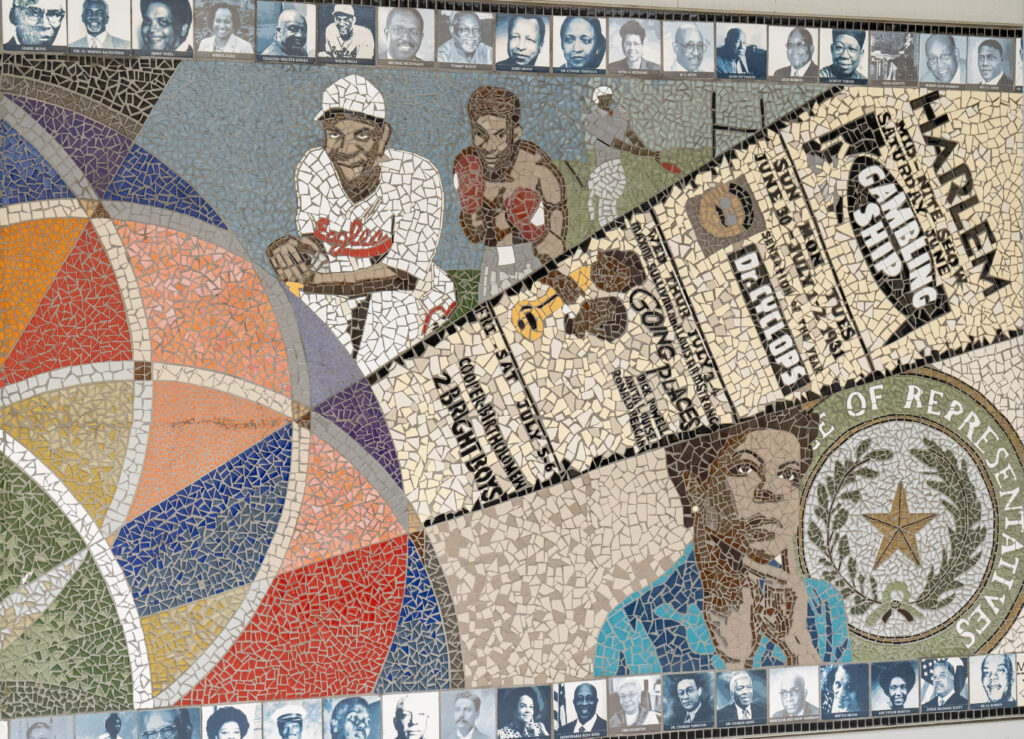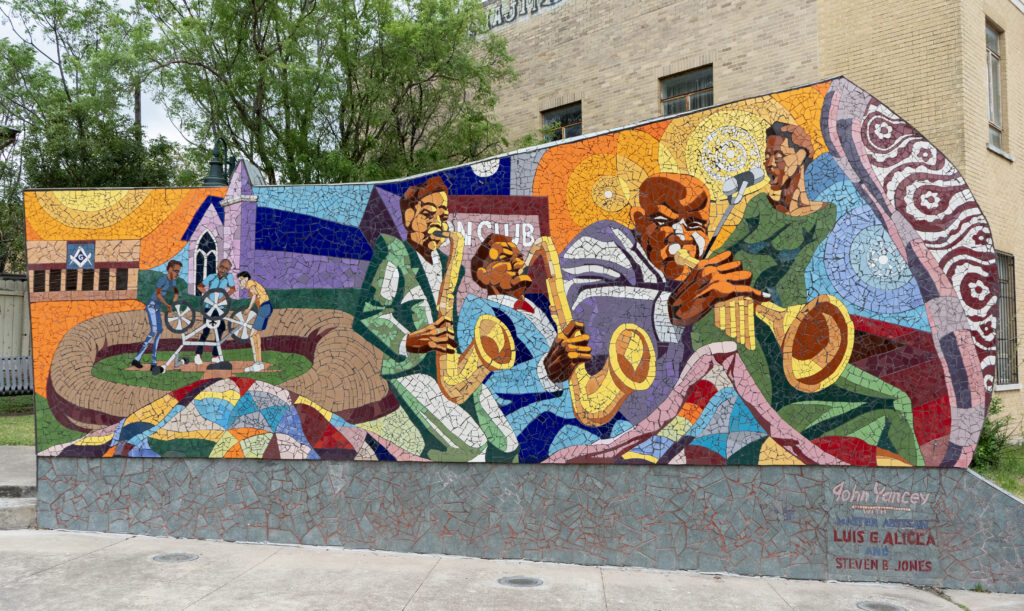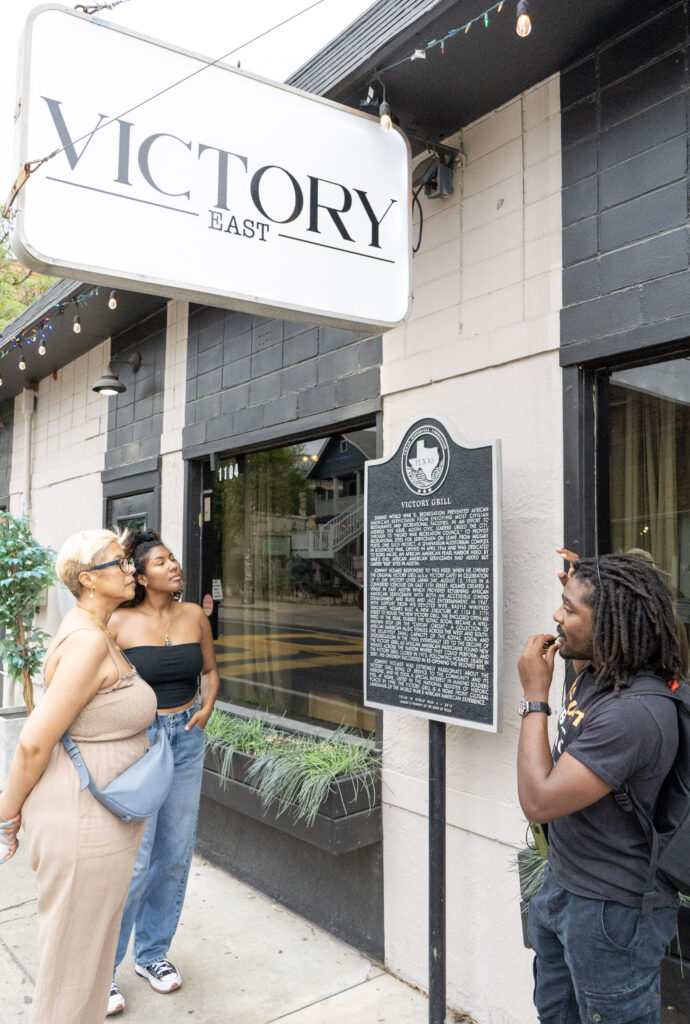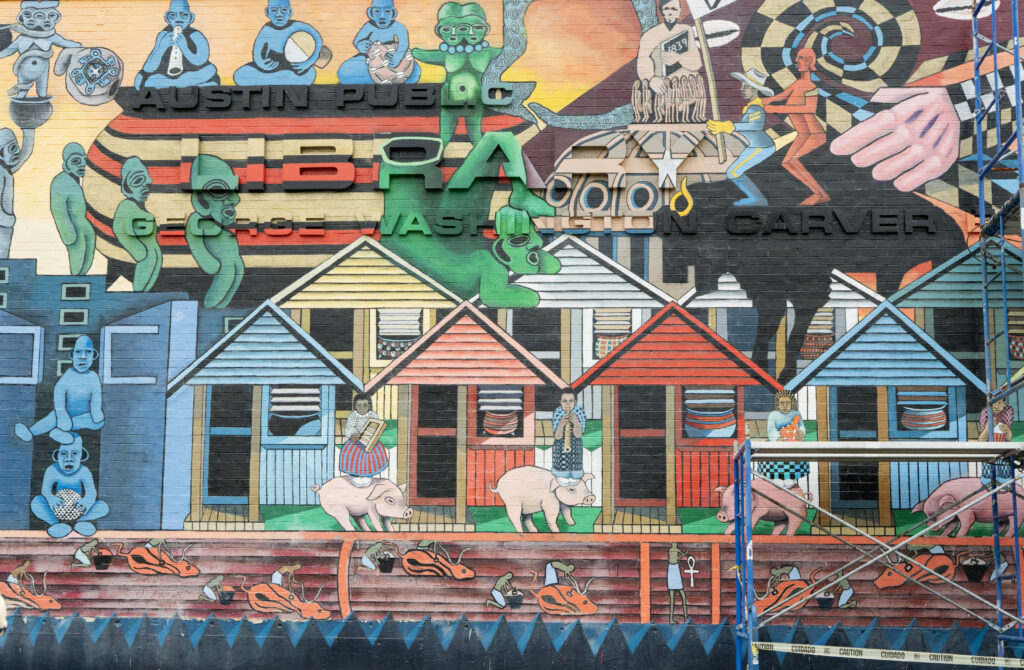Discover Black Austin Tours: Uncovering the Hidden History of East Austin
Experience a powerful walking tour that brings to life the enduring legacy of Austin’s Black community and the landmarks that continue to shape its identity today

On a humid spring evening in East Austin, a group follows Donovan Spann down 11th Street as he gestures toward a yellow shotgun house. “This is the Dedrick-Hamilton home,” he explains, his voice resonating with reverence. Thomas Dedrick, a formerly enslaved person, bought this property on Robertson’s Hill in around 1878. The Dedricks were among the first emancipated people to settle in what later became Six Square, named for the six square miles that Austin’s segregationist 1928 City Plan designated for Black residents.
This moment exemplifies what makes Black Austin Tours a profound experience. Founded in 2019 by Javier Wallace while completing his PhD at the University of Texas, the company offers walking tours that uncover the hidden histories of Austin’s Black community — histories that shaped the city but are often overlooked in conventional narratives.
“Black history did not end 10 years ago. It did not end 20 or 30 or 40, 50 years ago,” Spann tells the tour group. “Black history is ongoing, and it is every day. We are still living in Black history and making it to this moment.”

Educational Austin tours
The East Austin Black History Walk, one of several tours offered by the company, takes participants through locations central to Austin’s Black heritage — from the African-American Cultural Heritage Facility’s “Reflections” mural depicting community pioneers to the historic Victory Grill, which opened in 1945 to welcome Black soldiers returning from World War II. Along the way, visitors discover Hillside Pharmacy, which now operates as farm-to-table eatery, Hillside Farmacy, and was once owned by Ulysses “Doc” Young who, denied medical education in segregated Texas, traveled to Tennessee’s Meharry Medical College to become a pharmacist before returning to serve his community. Today, though under new management, the building still honors its history as a cornerstone of Black entrepreneurship and healthcare in East Austin.
Wallace’s creation of Black Austin Tours stems from deep, personal connections. A native Austinite whose family has been in the area for nearly 200 years, arriving as enslaved people when Texas was still part of Mexico in the 1820s, Wallace combined his academic background with his passion for community preservation. His father came to Austin in the 1970s on an athletic scholarship from Panama, adding another layer to his perspective on how race, class, gender and migration shape communities.
Spann, a fourth-year philosophy and anthropology student at the University of Texas at Austin, discovered purpose through his role as a tour guide. “It’s cool just to be able to learn this history and be like, ‘OK, people like me have always been here,'” he shares. “It makes me realize what I need to do. There are issues that Austin is simply glossing over, not even glossing. They’re actively erasing a lot of the history here and aren’t doing enough to preserve it because historically, they have pushed Black people out.”

Pillars of the community
The tour weaves a compelling narrative of how Austin’s 1928 Master Plan forcibly concentrated the city’s Black population into a designated “Negro District” in East Austin. On the tour, Spann mentions how shutting down utilities, schools and institutions in the approximately nine to 12 freedom colonies scattered around Austin, the city coerced a majority of the Black population to relocate. “With that, it becomes so much easier to control a population when they are all concentrated into one space,” explains Spann, revealing how this segregation paradoxically fostered congregation, the emerging theme
of the tour.
This creation of community against all odds becomes evident at each stop. At Wesley United Methodist Church, visitors learn how Black women exerted political influence through religious institutions when formal power structures excluded them. Spann highlights Rev. Jacob Fontaine, a formerly enslaved man from Arkansas who, though not the founder of this church, founded 13 Black churches in Travis
County.
“The church is really the heart of the Black community,” emphasizes Spann. “So, we’re going to see the church come up a lot throughout the tour because it’s the backbone, the pillar of the Black community.”

A sanctuary of sound and solidarity
At the historic Victory Grill, stories unfold about how venues along what was known as the “Chitlin Circuit” became cultural sanctuaries where legendary musicians like Duke Ellington, Etta James, Tina Turner and B.B. King performed after being barred from white establishments downtown. Johnny Holmes opened Victory Grill in August 1945 specifically as a venue where returning Black WWII veterans could celebrate their service to a country that refused to honor them properly.
“Imagine having been able to freely talk to whoever you want, to go where you want without thinking of segregation and having to come back to Jim Crow,” reflects Spann. “Well, to combat this, we have people like Johnny Holmes opening up the Victory Grill.”
The tour doesn’t shy away from the painful realities of gentrification in East Austin. According to the U.S. Census Bureau the percentage of residents in Austin who are Black has declined from 37% in 1870 to 7% in 2020, according to population estimates.

Stories of resilience
For visitors and locals alike, Black Austin Tours offers more than historical facts — it provides a profound reflection on what builds resilient communities and what happens when we fail to preserve them. In addition to the East Austin Black History Walk, the company offers explorations of downtown’s Black history, educational K-12 tours and even seasonal “Roll Colorado Roll” experiences that examine the river’s role in the development of the region with a focus on African American experiences.
One particularly popular offering is the “Taste & Sounds of the Chitlin Circuit,” which combines East Austin music history with samplings from Black-owned restaurants, creating a multisensory connection to the past. These diverse experiences ensure that participants can engage with Black Austin’s heritage through whatever medium speaks most clearly to them.
“I hope people leave the tour with the main theme — with segregation comes congregation, and that is what we need to be a community,” reflects Spann.
As Austin continues its rapid transformation, ranking consistently among America’s fastest-growing cities, Black Austin Tours stands as both witness and guardian to a heritage at risk of being forgotten. By illuminating the stories of resilience, creativity and solidarity that allowed the Black community to thrive despite systematic oppression, these tours remind us that through segregation came congregation — a testament to the enduring human spirit that flourishes even in the most challenging circumstances.
RELATED: Austin’s Most Beloved Trail: How Lady Bird Johnson & Ann Butler’s Vision Became a City Landmark








